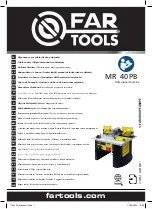
Ad hoc mode (also called peer-to-peer mode or an Independent Basic Service Set, or IBSS) is simply a set of 802.11
wireless stations that communicate directly with one another without using an access point or any connection to a wired
network. This mode is useful for quickly and easily setting up a wireless network anywhere that a wireless
infrastructure does not exist or is not required for services, such as a hotel room, convention center, or airport, or where
access to the wired network is barred (such as for consultants at a client site).
Example 2: wireless Ad Hoc Mode
4.5 What is BSSID?
A six-byte address that distinguishes a particular a particular access point from others.
Also know as just SSID. Serves as a network ID or name.
4.6 What is ESSID?
The Extended Service Set ID (ESSID) is the name of the network you want to access.
It is used to identify different wireless networks.
4.7 What are potential factors that may causes interference?
Factors of interference:
¾
Obstacles: walls, ceilings, furniture... etc.
¾
Building Materials: metal door, aluminum studs.
¾
Electrical devices: microwaves, monitors and electrical motors.
Solutions to overcome the interferences:
¾
Minimizing the number of walls and ceilings.
¾
Position the WLAN antenna for best reception.
¾
Keep WLAN devices away from other electrical devices, eg: microwaves,monitors, electric motors, ... etc.
¾
Add additional WLAN Access Points if necessary.
- 55 -




































